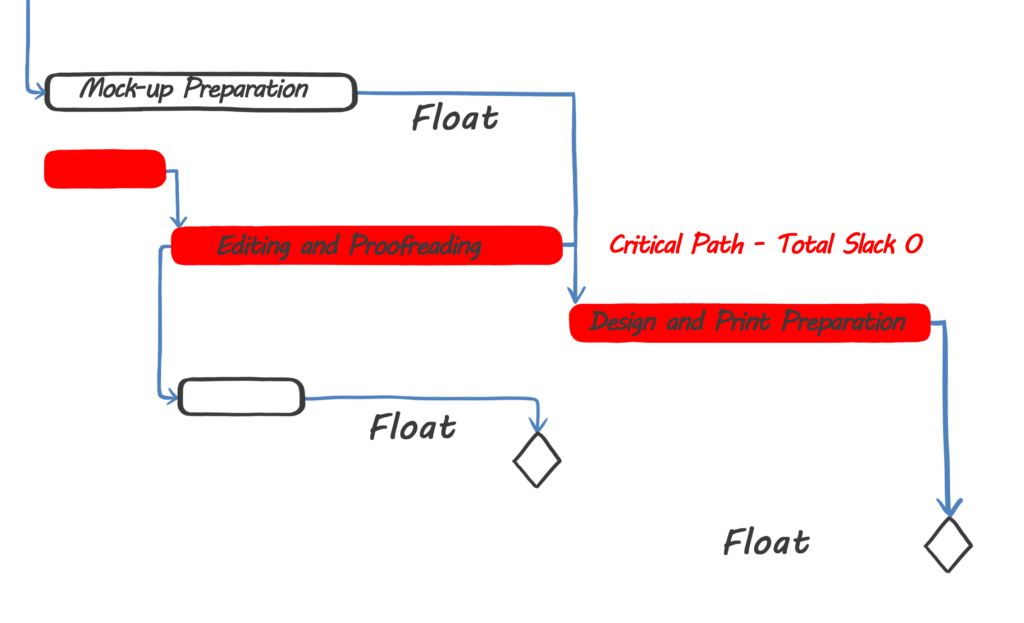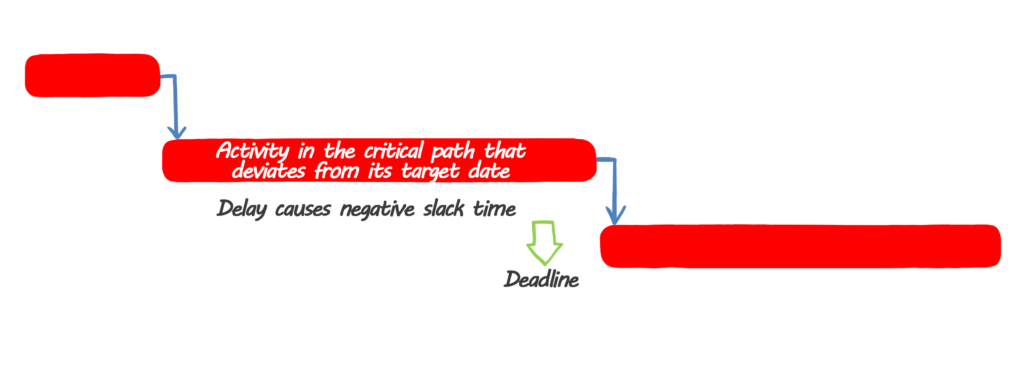Task floats are generated by determining early and late scheduling of the tasks. The scheduling mechanism of the tasks is calculated in two steps:
- Calculate the earliest start date of each task, which is calculated from the beginning of the project forward. The earliest start date combined with the duration of the task defines the earliest finish date of the task.
- Calculate the latest finish date of each task, which is calculated from the end of the project backward. The duration of the task is subtracted from its latest finish date to arrive at the latest possible start date of the task.
When the earliest start and finish dates of the task are the same as the latest start and finish dates, then the task has no total slack and is consequently included in the critical path of the project. Alternatively, if a task is behind schedule, then the task has a negative total slack and it, too, is included in the critical path of the project.
In all other cases where the earliest start and finish dates are different than the latest start and finish dates, there is a total slack making it possible for the task to be delayed without delaying the entire project.
For example: Preparing the mock-up of this book takes two weeks. It can begin after the first draft is written, at the earliest, and therefore can finish two weeks later, at the earliest. It must be finished by the time the editing and proofreading of the book are completed, at the latest, thus must begin at least two weeks prior. Between the time when the first draft is completed and the time when the book has been edited and proofread, there is time for the mock-up to be created without causing deviation from the project plan. This is the total slack time of the task.

Another parameter that affects the critical path of the project is the target completion date of its tasks. Whenever a task has a deadline date, the project manager should monitor its completion, since deviation from the deadline puts this task and all tasks connected to it into the critical path of the project with a negative slack time. Such an event incurs a deviation in the project; it must be dealt with in order to restore the critical path to its proper place with zero slack time.

